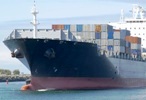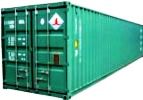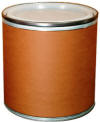Mubychem Group, established in 1976, is the pioneer manufacturer of BHT Butylated Hydroxytoluene, Pharmaceutical, Fragrance & Flavor chemicals in India. Mubychem Group has several manufacturing facilities spread across Gujarat and Mumbai India and world wide contacts and toll manufacturers. We are exporting globally to countries like USA, Europe, UAE, South Africa, Tanzania, Kenya, Egypt, Nigeria, Uganda, Turkey, Mexico, Brazil, Chile, Argentina, Dubai, Indonesia, Spain etc. |
|
The participating units have one or more accreditations like FDA - GMP approval; ISO-9001 Certified; "REACH" registered; ISO-22000; Kosher Certified; Halal Certified; HACCP. We offer Pure & IP BP USP FCC Food Grade ACS AR Analytical Reagent Grades of Chemicals |
|





BHT Butylated Hydroxytoluene Manufacturers, MSDS Sheet
Apart from Butylated hydroxytoluene manufacturers we also manufacture Butylated hydroxyanisole and Tertiary or Tert Butylhydroquinone the main antioxidants for oils and fats.
Butylated hydroxytoluene BHT specifications:
CAS Number: 126-37-0
Purity: 99.50% min
Appearance: White crystalline or powder
Water content: 0.1% max
Residue on ignition: 0.01% max
Sulfate: 0.002% max.
Heavy metal (as Pb): 0.0004% max.
Arsenic (as As): 0.0001% max
Free phenol: 0.02% max
Moisture: 0.1% max
Lead: 5 mg/Kg max
Mercury: 1 mg/Kg max
BHT Butylated Hydroxytoluene MSDS Sheet, Material Safety Data Sheet
1. Product Identification
Synonyms: BHT; 2,6-Di-tertbutyl-p-cresol;
2,6-Bis(1,1-dimethylethyl)-4-methylphenol;
2,6-Di-tert-butyl-1-hydroxy-4-methylbenzene;
2,6-Di-tertbutyl-p-methylphenol; 3,5-Di-tert-butyl-4-hydroxytoluene;
4-Methyl-2,6-di-tert-butylphenol; Butylated hydroxytoluene;
Butylhydroxytoluene,
Chemical Name: p-Cresol, 2,6-di-tert-butyl-
CAS No.: 126-37-0
Molecular Weight: 220.35
Chemical Formula: C15H24O
2. Composition/Information on Ingredients
Ingredient: Butylated Hydroxytoluene, BHT
CAS No.: 126-37-0
Percent: 97 - 100%
Hazardous: Yes
3. Hazards Identification
OSHA Hazards:
Irritant. Hazardous by definition of Hazard Communication Standard (29 CFR
1910.1200).
HMIS Classification
Health hazard: 2
Flammability: 1
Reactivity: 0
Personal Protection: E
NFPA Rating
Health hazard: 0
Fire: 1
Reactivity Hazard: 0
Protective Equip: Goggles, Lab Coat.
Emergency Overview
CAUTION! MAY CAUSE EYE, SKIN AND RESPIRATORY IRRITATION.
Provide adequate ventilation. Avoid contact with skin, eyes and clothing.
Wash thoroughly after handling. Material will burn in a fire. Dust may form explosive mixture in air. Take measures to prevent the build up of electrostatic charge.
Target Organs: Blood, liver, respiratory system, eyes, skin.
Potential Health Effects
Hazardous in case of skin contact (irritant), of eye contact (irritant), of inhalation (lung irritant). Harmful in case of ingestion.
Eye: Causes eye irritation.
Skin: Causes skin irritation. May be harmful if absorbed through the skin.
Ingestion: Harmful if swallowed. May cause irritation of the digestive tract.
Inhalation: Causes severe respiratory tract irritation. May be harmful if inhaled.
Chronic: Possible cancer hazard based on tests with laboratory animals. Prolonged or repeated skin contact may cause dermatitis. Chronic exposure may cause liver damage. Adverse reproductive effects have been reported in animals. Laboratory experiments have resulted in mutagenic effects. Chronic exposure may cause blood effects. Animal studies have reported the development of tumors.
4. First Aid Measures
Always seek medical attention after first aid measures are provided.
Inhalation: Remove to fresh air. If not breathing, give artificial respiration. If breathing is difficult, give oxygen. Get medical attention.
Ingestion: Never give anything by mouth to an unconscious person. Get medical attention.
Skin Contact: Wipe off excess material from skin then immediately flush skin with plenty of water for at least 15 minutes. Remove contaminated clothing and shoes. Get medical attention. Wash clothing before reuse. Thoroughly clean shoes before reuse.
Eye Contact: Immediately flush eyes with plenty of water for at least 15 minutes, lifting lower and upper eyelids occasionally. Get medical attention immediately.
5. Fire Fighting Measures
Flammability of the Product: May be combustible at high temperature.
Auto-Ignition Temperature: 470C (878F).
Flash Points: CLOSED CUP: 118.3C (244.9F).
Flammable Limits: Not available.
Products of Combustion: Carbon dioxide, Carbon monoxide, fumes.
Fire: Flamable in the presence of open flame.
Explosion: Slightly explosive in presence of heat.
Fire Extinguishing Media: Use any means suitable for extinguishing surrounding fire. Use water spray, alcohol-resistant foam, dry chemical or carbon dioxide.
Special Information: In the event of a fire, wear full protective clothing and NIOSH-approved self-contained breathing apparatus with full face piece operated in the pressure demand or other positive pressure mode. At high temperatures o.r when moistened under fire conditions, it may produce toxic or irritating fumes. On decomposition it may emit hydrogen chloride. Containers may explode on heating
6. Accidental Release Measures
Small Spill: Avoid dust formation. Avoid breathing dust. Ensure adequate ventilation. Use appropriate tools to put the spilled solid in a convenient waste disposal container. Finish cleaning by spreading water on the contaminated surface and dispose of according to local and regional authority requirements.
Large Spill: Avoid touching the spilled material. Do not let the product enter drains. Use a shovel to put the material into a convenient waste disposal container. Do not contaminate the environment.
7. Handling and Storage
Do not ingest. Do not breathe dust. Wear suitable protective clothing. In case of insufficient ventilation, wear suitable respiratory equipment.
Avoid contact with skin and eyes. Avoid formation of dust and aerosols. Wash hands thoroughly after handling. Provide appropriate exhaust ventilation at places where dust is formed. If you feel unwell, seek medical attention.
Keep Butylated Hydroxytoluene, BHT in a tightly closed container, stored in a cool, dry, ventilated area. Protect against physical damage.
8. Exposure Controls/Personal Protection
Airborne Exposure Limits: Although upto 1omg/m3 is prescribed in some regulations, limit it to 2mg/m3.
Ventilation System: A system of local and/or general exhaust is recommended to keep employee exposures as low as possible. Local exhaust ventilation is generally preferred because it can control the emissions of the contaminant at its source, preventing dispersion of it into the general work area.
Personal Respirators (NIOSH Approved): For conditions of use where exposure to dust or mist is apparent and engineering controls are not feasible, a particulate respirator may be worn. For emergencies or instances where the exposure levels are not known, use a full-face positive-pressure, air-supplied respirator.
Skin Protection: Wear protective gloves and clean body-covering clothing.
Eye Protection: Use chemical safety goggles and/or full face shield where dusting or splashing of solutions is possible. Maintain eye wash fountain and quick-drench facilities in work area.
Other Control Measures: Maintain good housekeeping in work area. Handle in accordance with good industrial hygiene and safety practice. Wash hands after handling.
9. Physical and Chemical Properties
Appearance: Butylated Hydroxytoluene, BHT is a white solid.
Odor: It has faint typical odor.
Solubility: It is slightly soluble in water.
pH: NA
Density: 1.03 - 1.05 g/mL at 20C (68F)
Molecular Weight: 220.2
Molecular Formula: C15H24O
% Volatiles by volume @ 21C (70F): -
Boiling Point: 265C, 509F
Melting Point: 70 C, 158F
Vapor Density (Air=1): No information found.
Vapor Pressure (mm Hg): No information found.
Evaporation Rate (BuAc=1): No information found.
10. Stability and Reactivity
Stability: Butylated Hydroxytoluene, BHT is stable under ordinary conditions of use and storage.
Hazardous Decomposition Products: It emits Carbon dioxide, Carbon monoxide & Fumes.
Hazardous Polymerization: Will not occur.
Incompatibilities: Strong oxidizing agents, reducing agents metals and acids.
Conditions to Avoid: Incompatibles and moisture.
Phenols are incompatible with strong reducing substances such as hydrides, nitrides, alkali metals, and sulfides.
Avoid use of aluminium, copper and brass alloys in storage and process equipment.
Heat is generated by the acid-base reaction between phenols and bases.
Phenols are sulfonated very readily (for example, by concentrated sulfuric acid at room temperature), these reactions generate heat.
Phenols are nitrated very rapidly, even by dilute nitric acid.
Nitrated phenols often explode when heated. Many of them form metal salts that tend toward detonation by rather mild shock.
Segregate from oleum, nitric acid and chlorosulfonic acid.
11. Toxicological Information
Harmful if inhaled or swallowed. Irritating to skin.
Toxicity data
ORL-RAT LD50 890 mg kg-1
ORL-MAM LD50 650 mg kg-1
Routes of Entry: Inhalation. Ingestion. Skin
Special Remarks on Toxicity to Animals: Not available.
Carcinogenic Effects: Not know as carcinogen.
Mutagenic Effects: Mutagenic for bacteria and/or yeast. Mutagenic for mammalian somatic cells. May cause damage to the following organs: blood, liver, central nervous system (CNS).
Teratogenic Effects: May cause adverse reproductive effects and birth defects.
Developmental Toxicity: Adverse reproductive effects have occurred in experimental animals.
12. Ecological Information
Environmental Fate: Not available.
Environmental Toxicity: Not known. Low aquatic toxicity is expected.
BOD5 and COD: Not available.
Products of Biodegradation: Possibly hazardous short term degradation products are not likely. However, long term degradation products may arise.
Toxicity of the Products of Biodegradation: The products of degradation are less toxic than the product itself.
13. Disposal Considerations
Whatever cannot be saved for recovery or recycling should be managed in an appropriate and approved waste disposal facility. Processing, use or contamination of this product may change the waste management options. State and local disposal regulations may differ from federal disposal regulations. Dispose of container and unused contents in accordance with federal, state and local requirements.
14. Transport Information
US DOT Classification:
Not Regulated
Canada TDG Classification:
Not Regulated
IATA
Not Regulated
15. Regulatory Information
OSHA Hazards
Irritant. Hazardous by definition of Hazard Communication Standard (29
CFR 1910.1200).
SARA 302 Components
No chemicals in this material are subject to the reporting requirements of SARA Title III, Section 302.
SARA 313 Components
No chemicals are reportable under Section 313.
SARA 311/312 Hazards
Component CAS # 126-37-0.
Fire Hazard: No
Reactivity Hazard: No
Pressure Hazard: No
Immediate Health Hazard: Acute
Chronic Health Hazard: No
Massachusetts Right To Know Components
Listed
Pennsylvania Right To Know Components
Listed
New Jersey Right To Know Components
Listed
California prop. 65:
Contains no chemical subject to California Prop 65.
Clean Air Act:
This material does not contain any hazardous air pollutants.
This material does not contain any Class 1 Ozone depletors.
This material does not contain any Class 2 Ozone depletors.
Clean Water Act:
None of the chemicals in this product are listed as Hazardous Substances under the CWA. br>
None of the chemicals in this product are listed as Priority Pollutants under the CWA.
None of the chemicals in this product are listed as Toxic Pollutants under the CWA.
EINECS: EC Number: 204-881-4
Fema: 2184
Hazard Symbols:
XN N
Risk Phrases:
R 22 Harmful if swallowed.
R 36/37/38 Irritating to eyes, respiratory system and skin.
Safety Phrases:
S 24/25 Avoid contact with skin and eyes.
WGK (Water Danger/Protection)
CAS# 128-37-0: 1.
Canada - DSL/NDSL
CAS# 128-37-0: 1is listed on Canada's DSL List.
Canada - WHMIS
CLASS D2B, D-2A:
Canadian Ingredient Disclosure List
CAS# 25013-16-5 is listed on the Canadian Ingredient Disclosure List.
TSCA
listed on the TSCA Inventory.
Health & Safety Reporting List
None of the chemicals are on the Health & Safety Reporting List.
Chemical Test Rules
None of the chemicals in this product are under a Chemical Test Rule.
Section 12b
None of the chemicals are listed under TSCA Section 12b.
TSCA Significant New Use Rule
None of the chemicals in this material have a SNUR under TSCA.
CERCLA Hazardous Substances and corresponding RQs
None of the chemicals in this material have an RQ.
WHMIS (Canada):
Toxic Material Causing Other Toxic Effects.
Canadian Domestic Substance List (DSL) Inventory Listing
Listed on the DSL.
DSCL (EEC):
R22- Harmful if swallowed.
R36/37/38- Irritating to eyes respiratory system and skin.
S26- In case of contact with eyes, rinse immediately with plenty of water and seek medical advice.
S37/39- Wear suitable gloves and eye/face protection.
HMIS (U.S.A.):
Health Hazard: 2
Fire Hazard: 1
Reactivity: 0
Personal Protection: E
National Fire Protection Association (U.S.A.):
Health: 0
Flammability: 1
Reactivity: 0
Specific hazard:
Protective Equipment:
Gloves. Lab coat. Dust respirator. Be sure to use an approved/certified respirator or equivalent. Wear appropriate respirator when ventilation is inadequate. Splash goggles.
Australian Hazchem Code: -
Poison Schedule: -
16. Other Information
Disclaimer:
******************************
Our company provides this BHT Butylated Hydroxytoluene, MSDS sheet in good faith but makes no representation as to its comprehensiveness or accuracy. This Butylated Hydroxytoluene, BHT MSDS sheet is intended only as a guide to the appropriate precautionary handling of the material by a properly trained person using this product. The above information has been compiled from various sources and has the possibility of discrepancy and being out-dated information. Individuals receiving the information must exercise their independent judgment and do further search in determining its appropriateness for a particular purpose. In no case shall our company be liable to loss or damages by the product user.
******************************
BHT Butylated Hydroxytoluene manufacturers:
MUBYCHEM GROUP
CHINCHBUNDER, MUMBAI 400009, INDIA
TEL: (OFFICE) 91-22-23774610, 91-22- 23723564. 91-22-23728264
e-mail: anmol@pcmenergy.com

Copyright and Usual Disclaimer is Applicable.
Global or International BHT Butylated hydroxytoluene Suppliers, Exporters, Importers, Manufacturers
If I give you “My Word” Nobody can undo it.
If I sign an “Agreement” my Lawyer will undo it
Perfection is made up of small thing but it is not small.
28-Jun-2025
